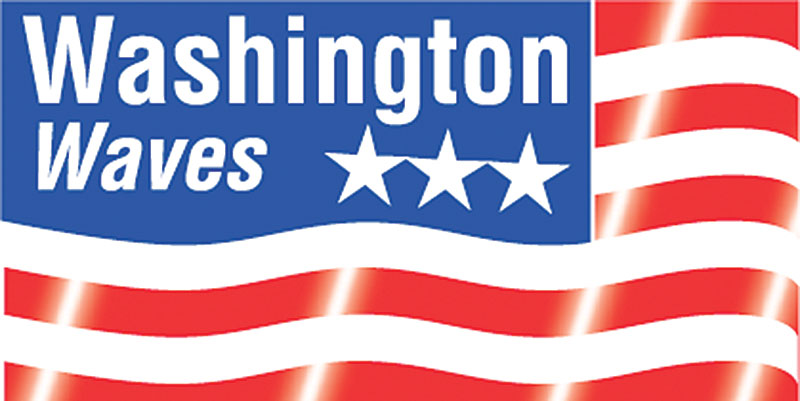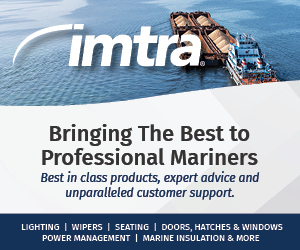At press time, the federal government still faced the possibility of a shutdown September 30. The March continuing resolution funding the government will expire on that date if Republicans and Democrats can’t agree on a spending bill. The House of Representatives passed its version of a stopgap funding bill, but the Senate rejected it. House Republican leaders have signaled they may not return to Washington until after October 1. Fights over spending levels and whether to expand Obamacare deadlocked the two parties.
Restart Of Wind Project
On September 22, Judge Royce Lamberth of the U.S. District Court for the District of Columbia issued a preliminary injunction allowing Danish energy company Ørsted to restart work on Revolution Wind, a large wind farm off the coast of Rhode Island that was nearly complete but was abruptly halted last month by President Donald Trump’s administration.
Lamberth lifted an August 22 stop-work order issued by the U.S. Department of the Interior suspending permits for the project. The preliminary injunction came in response to a lawsuit filed by Ørsted and its partner Skyborn Renewables. The judge has yet to issue a formal opinion, but he called the Trump administration’s explanations for the action “the height of arbitrary and capricious.” Government lawyers have claimed undefined threats to national security and allege that former President Joe Biden’s administration rushed through environmental permitting for the project.
The $5 billion Revolution Wind array is about 80 percent complete, according to the developers and participating state officials in Rhode Island and Connecticut.
The Trump administration has been hostile to wind and other alternative energy projects. At a September 11 energy conference in Italy, Interior Secretary Doug Burgum said, “Under this administration, there is not a future for offshore wind because it is too expensive and not reliable enough.”
Wind promoters cheered Lamberth’s decision.
Trump Halts Steel Plant Shutdown
The Wall Street Journal reported that the Trump administration has halted the planned shutdown of a barge-served Granite City, Ill., steel plant operated by U.S. Steel, which is now owned by Nippon Steel. The company announced the shutdown in early September, saying it would continue to pay the plant’s 800 unionized workers regardless of the shutdown.
Nippon Steel’s $14.1 billion takeover of U.S. Steel in June was approved by the Trump administration only under a national security deal that gives the U.S. government a controlling “golden share.” The deal gave Trump and future presidents the right to prevent shutdowns or transfers of operations out of the country. In the agreement, Nippon Steel committed to operating U.S. Steel’s existing plants through 2035, and the Granite City plant into 2027.
After Trump intervened, Nippon Steel reversed course and said on September 19 that processing of slab steel would continue at the plant.
The United Steelworkers union, which represents Granite City’s hourly workers opposed U.S. Steel’s plan to transfer work done at the mill to other company plants. They called the move a violation of Nippon Steel’s pledge.
Some of the work in the planned move would have gone to Big River Steel in Osceola, Ark., also owned by Nippon, which produces slab steel using a thin-slab continuous caster process. The Granite City plant stopped producing raw steel with a blast furnace in 2023.
Exam Requirement Removed
The U.S. Coast Guard’s Office of Merchant Mariner Credentialing has published CG-MMC Policy Letter 01-25, titled “Professional Examination for Mariners Raising the Grade of Officer Endorsements from Master Less Than 500 or 1,600 Gross Registered Tons to Third Mate of Unlimited Tonnage.”
The policy removes the examination requirement for mariners who hold a national endorsement as Master 500 GRT or Master 1600 GRT who are applying for an endorsement as Third Mate unlimited tonnage on the same route.
The policy letter is available on the Coast Guard’s Merchant Mariner Credentialing policy website at www.dco.uscg.mil/nmc/merchant_mariner_credential.
Mariners and other interested parties should contact the Mariner Credentialing Program Policy Division at MMCPolicy@uscg.mil or 202-372-2357 with any questions or feedback.
Chinese-Linked Ship Fees Set To Begin
On October 14, the United States is set to begin collecting fees on China-linked vessels that visit the nation’s seaports. While final rules from the U.S. Trade Representative (USTR) are pending, HSBC analysts recently said China’s COSCO Shipping is most exposed with potential port fees of $1.5 billion owed next year.
Affected ships fall into several categories.
Annex I includes vessels owned or controlled by Chinese entities (PRC, Hong Kong, Macau) or have Chinese operators. Those will be assessed a fee based on net tonnage per U.S. voyage. Starting October 14, the rate is $50 per net ton (for Chinese‐linked ships) and will increase annually until reaching $140 per net ton by April 17, 2028.
Annex II includes ships built in China (even if not Chinese-operated or owned). The fee will be whichever is higher: a net tonnage-based fee or a per‐container discharged fee (for container ships). On October 14, the net tonnage rate is $18 per net ton, and the container‐based rate is $120 per container discharged.
Annex III covers foreign-built vehicle carriers. Any foreign-built vehicle carrier (i.e. roll-on/roll-off ships) entering U.S. ports will face a fee. Initially, the basis was proposed as $150 per Car Equivalent Unit (CEU) capacity, beginning October 14. However, the USTR has proposed modifications to change that to a net tonnage basis.
Annex IV includes LNG export vessels, effective from April 17, 2028. Vessels exporting liquified natural gas (LNG) will have requirements starting in 2028 to use U.S.-built, U.S.-flagged vessels for a certain share of exports. These fees are not effective October 14, so ships in that category are not affected immediately.
The Shipbuilding and Harbor Infrastructure for Prosperity and Security (SHIPS) for America Act introduced in April would establish the Maritime Security Trust to reinvest the port fee proceeds into maritime security and infrastructure projects such as shipyard revitalization.
The rules include a number of exemptions or thresholds. U.S.-flagged vessels, or vessels enrolled in U.S. maritime security programs (e.g. Maritime Security Program, Cable Security Program), may be exempt under certain conditions. Vessels arriving empty or in ballast (i.e. not carrying cargo) are exempt under Annex II. Smaller vessels may be exempt from Annex II fees. Voyages from a foreign port that is less than 2,000 nautical miles from a U.S. port are exempt under Annex II. That generally excludes intra-Americas trade (Central America, Caribbean, Canada) for the Chinese-built ship fee.
U.S. government cargo is exempt. The United States already has airport and highway trust funds that provide reliable, steady sources of funding for infrastructure projects and maintenance, said Michael Wessel, president of the Wessel Group consulting firm, which helped investigate the trade practices that led to the imposition of the port fees.




